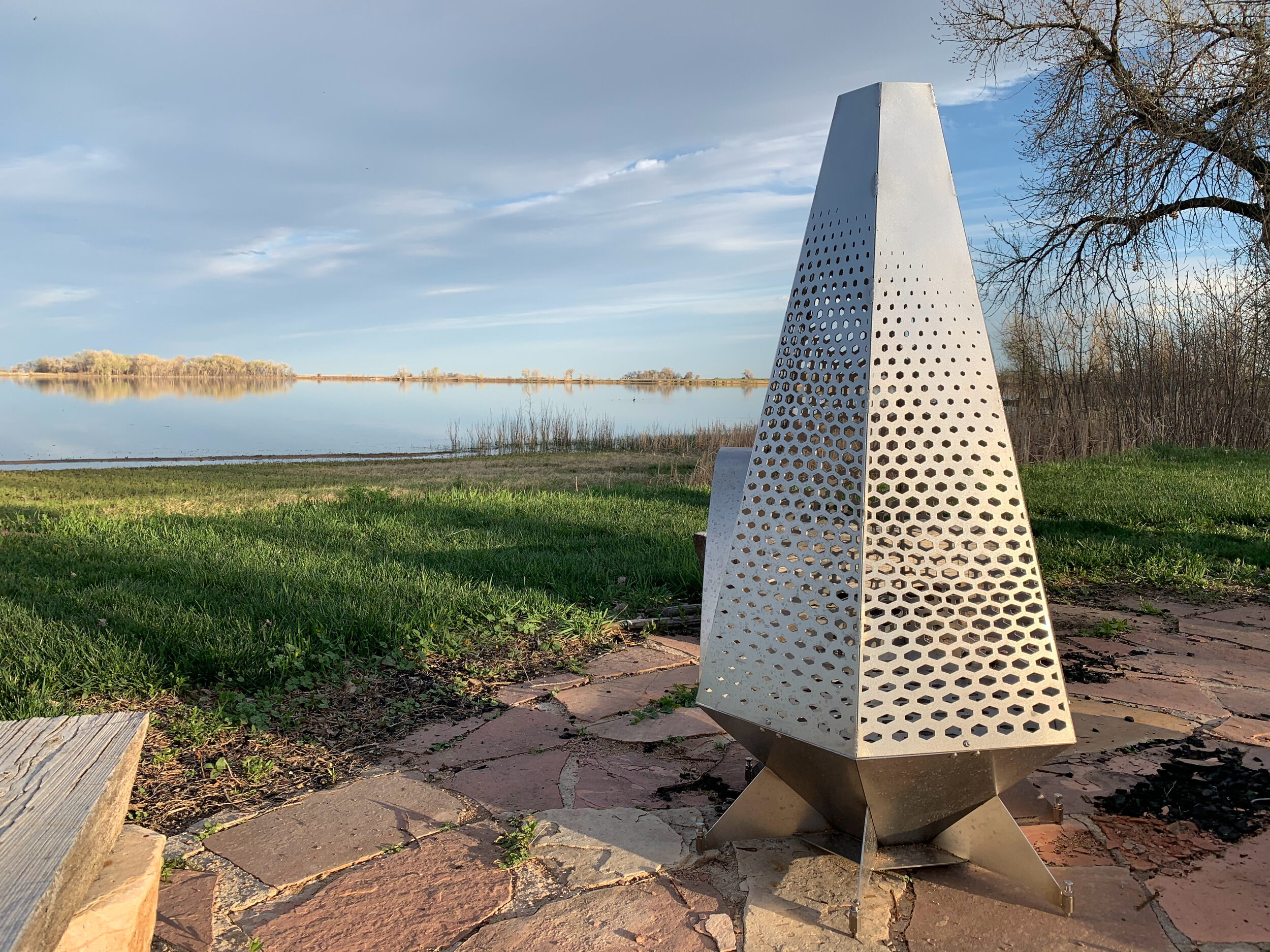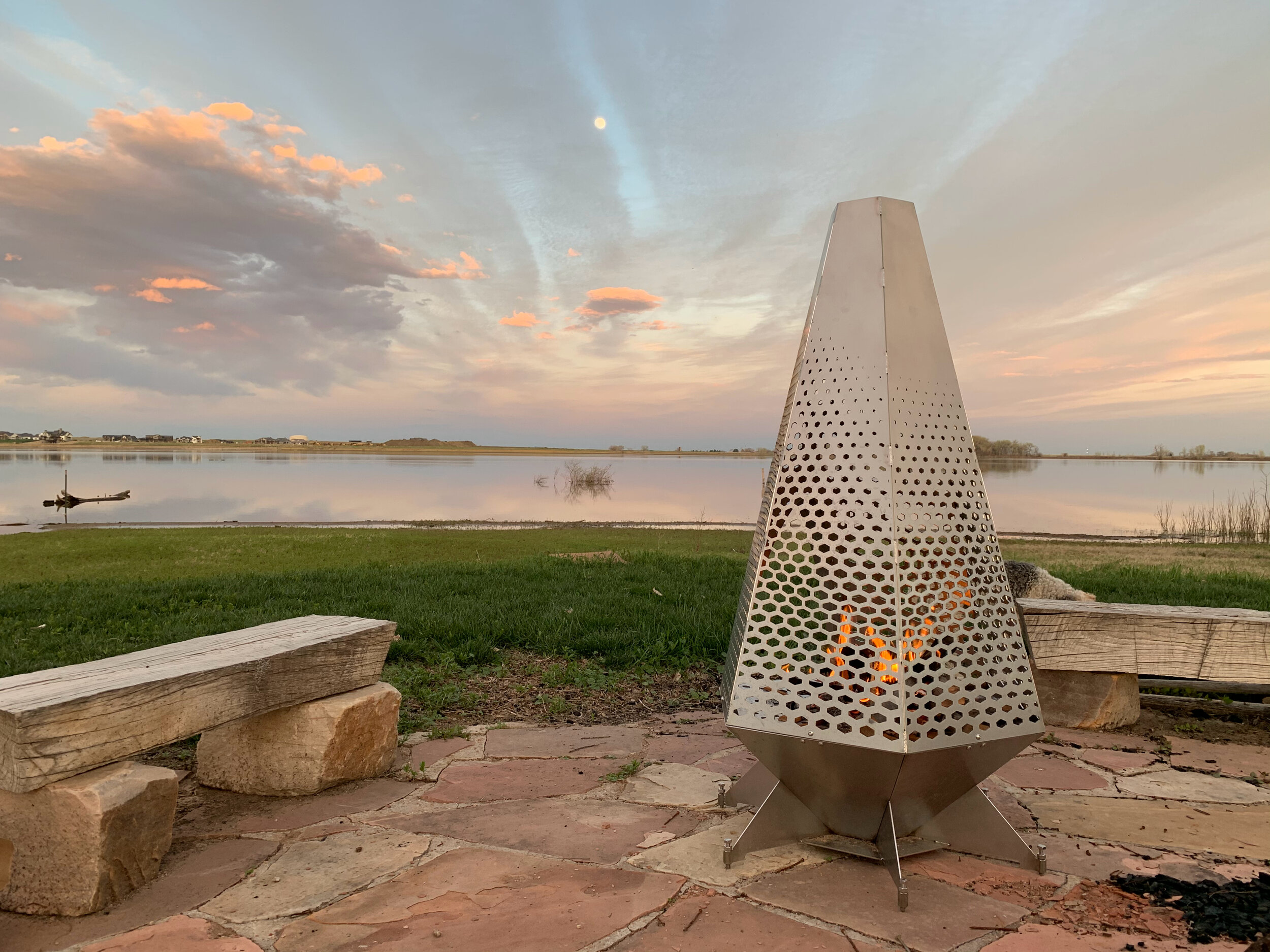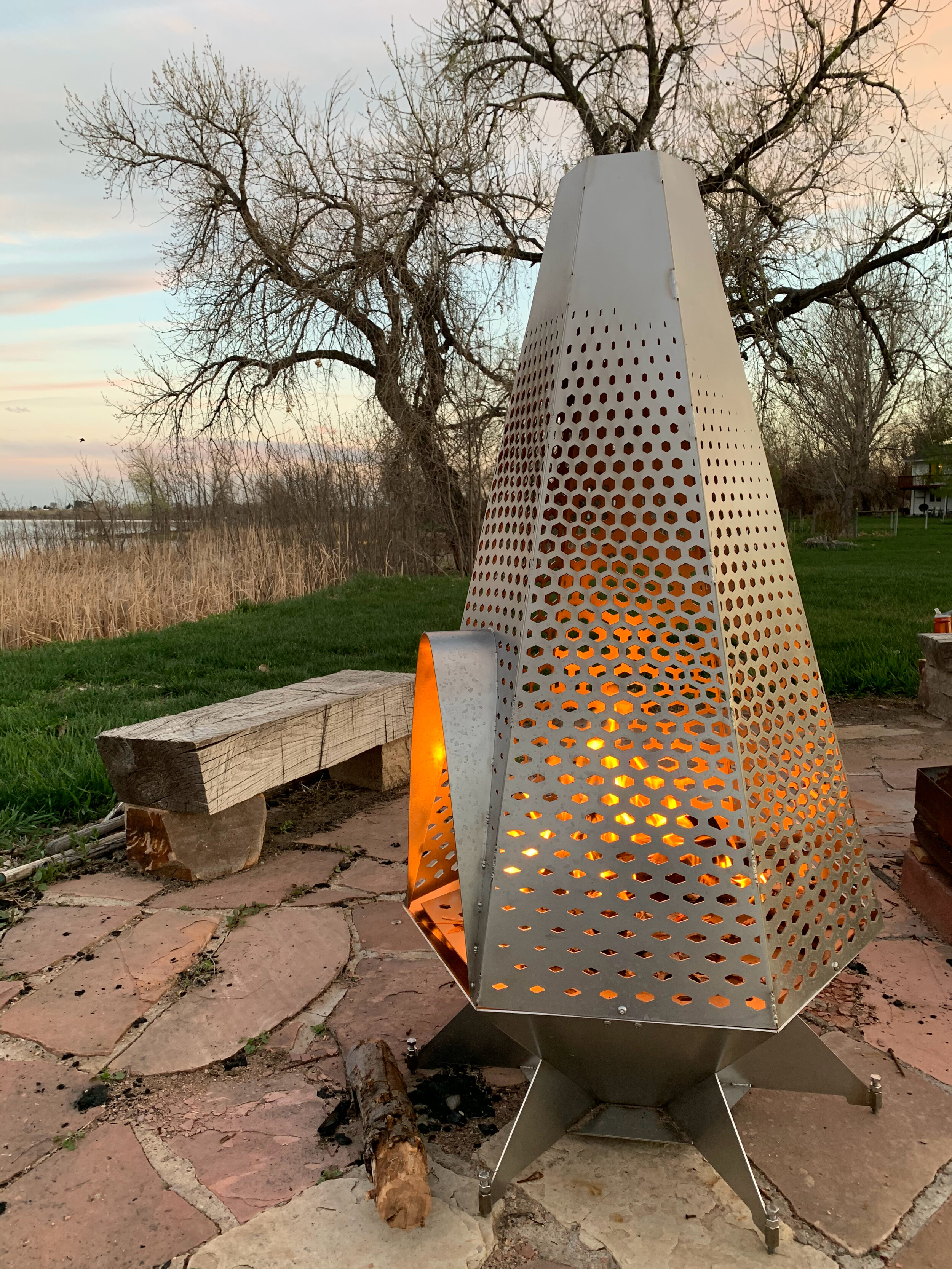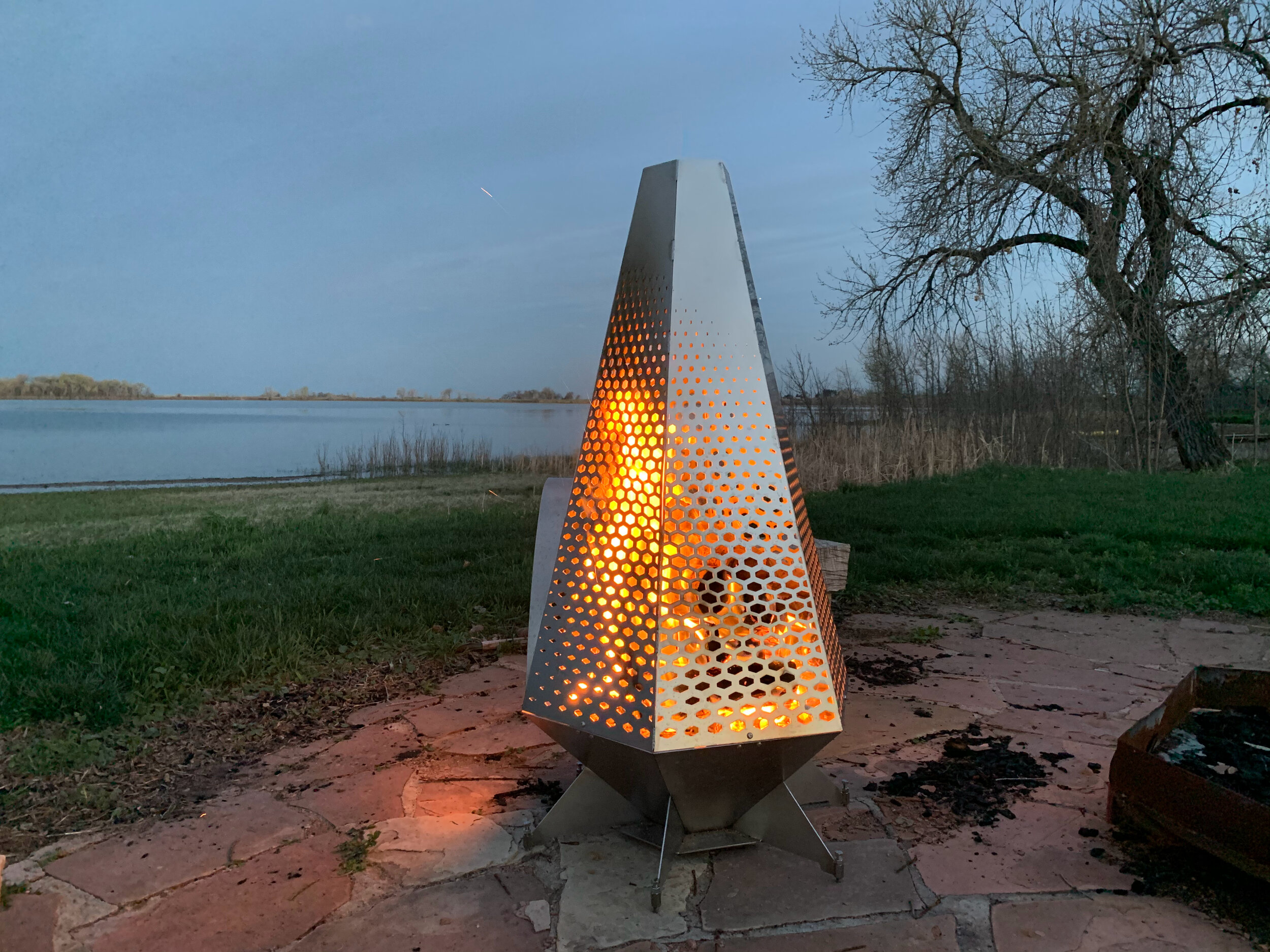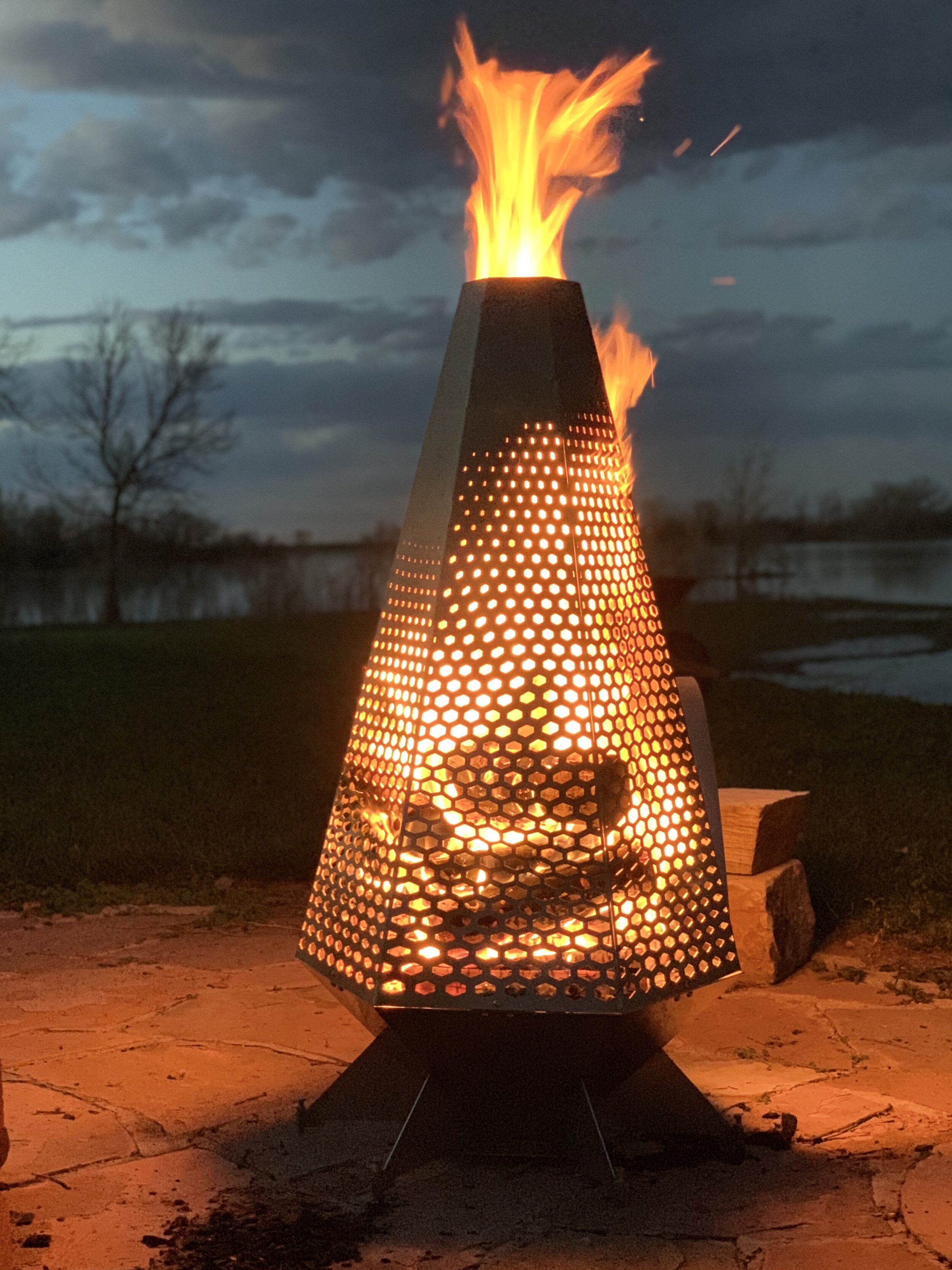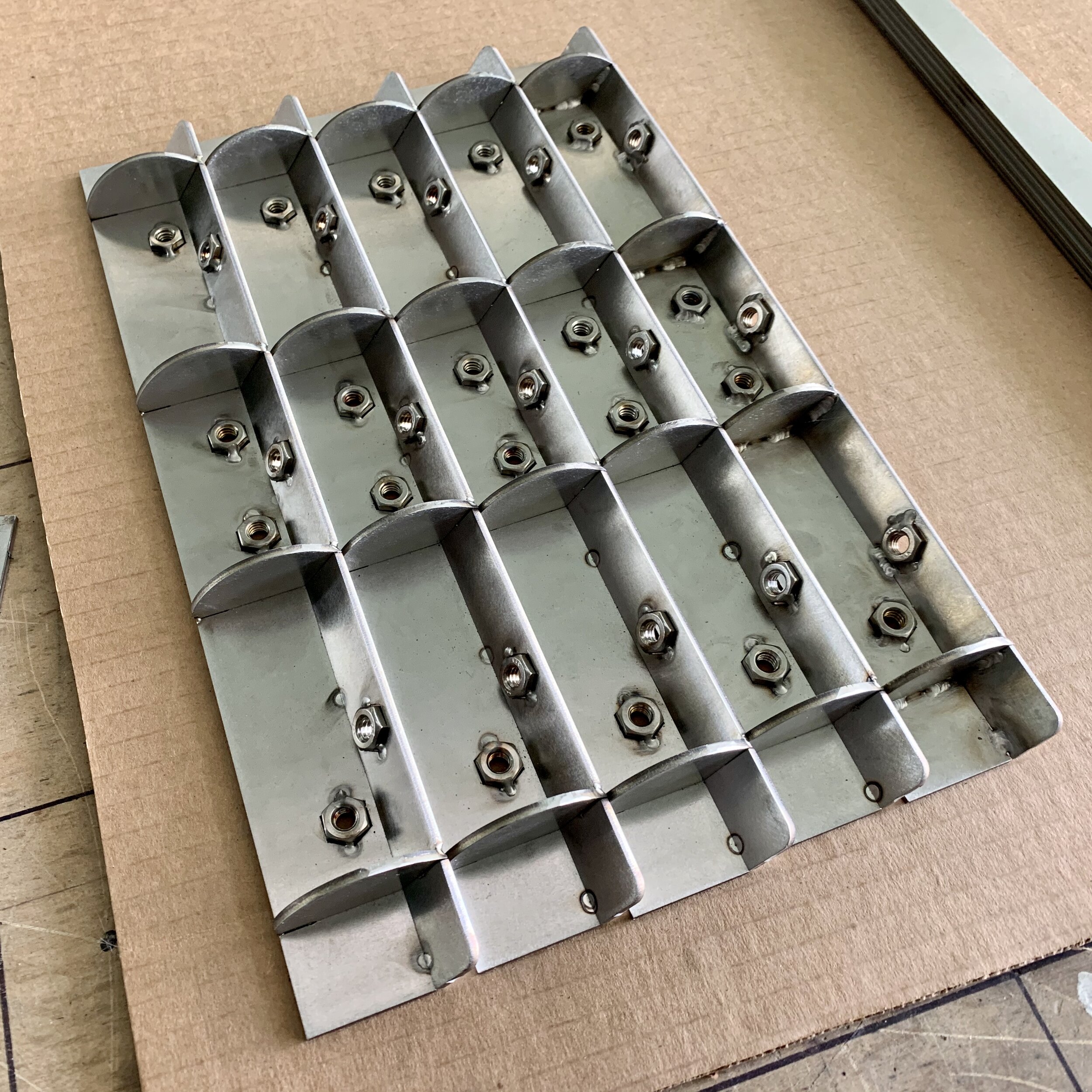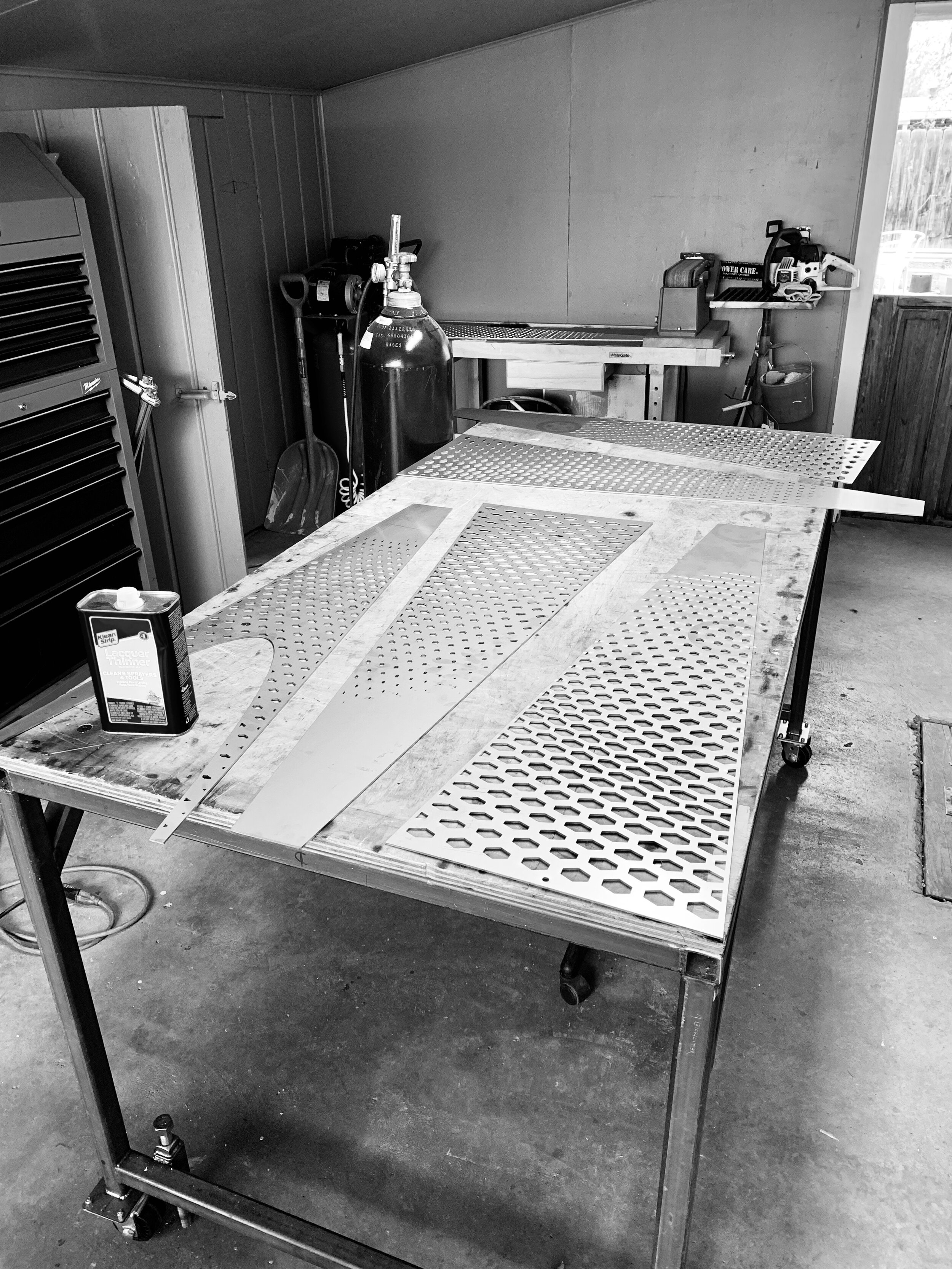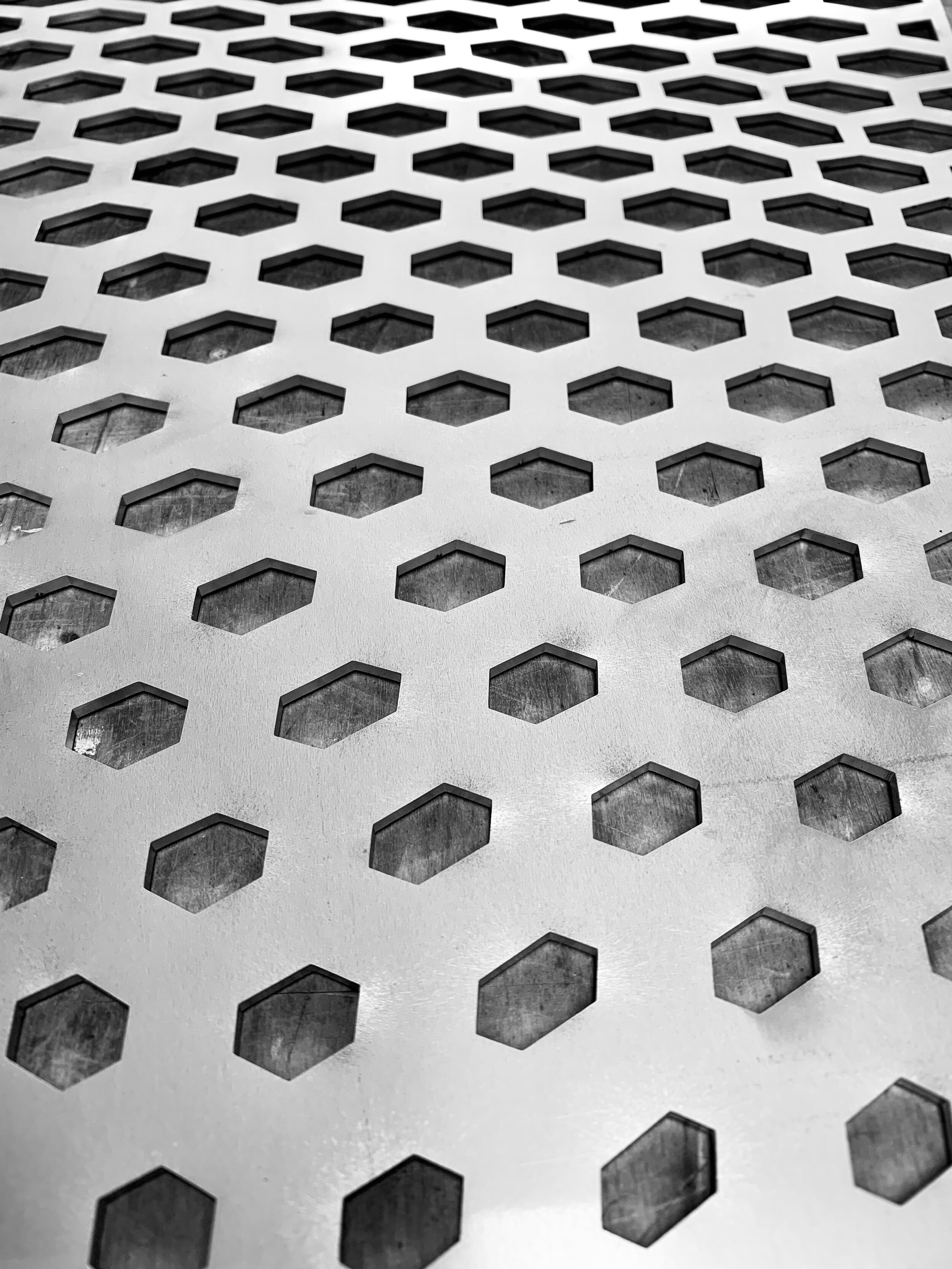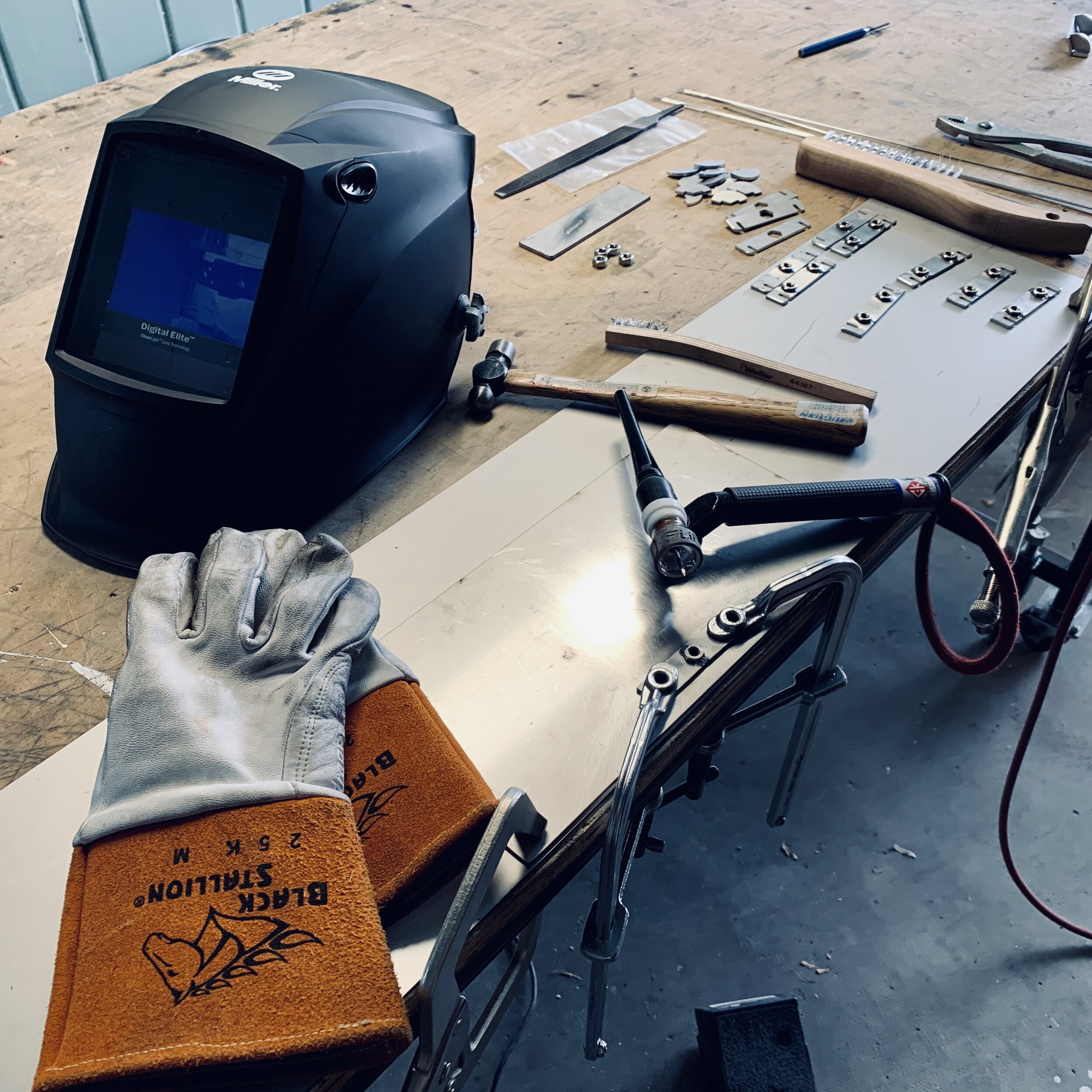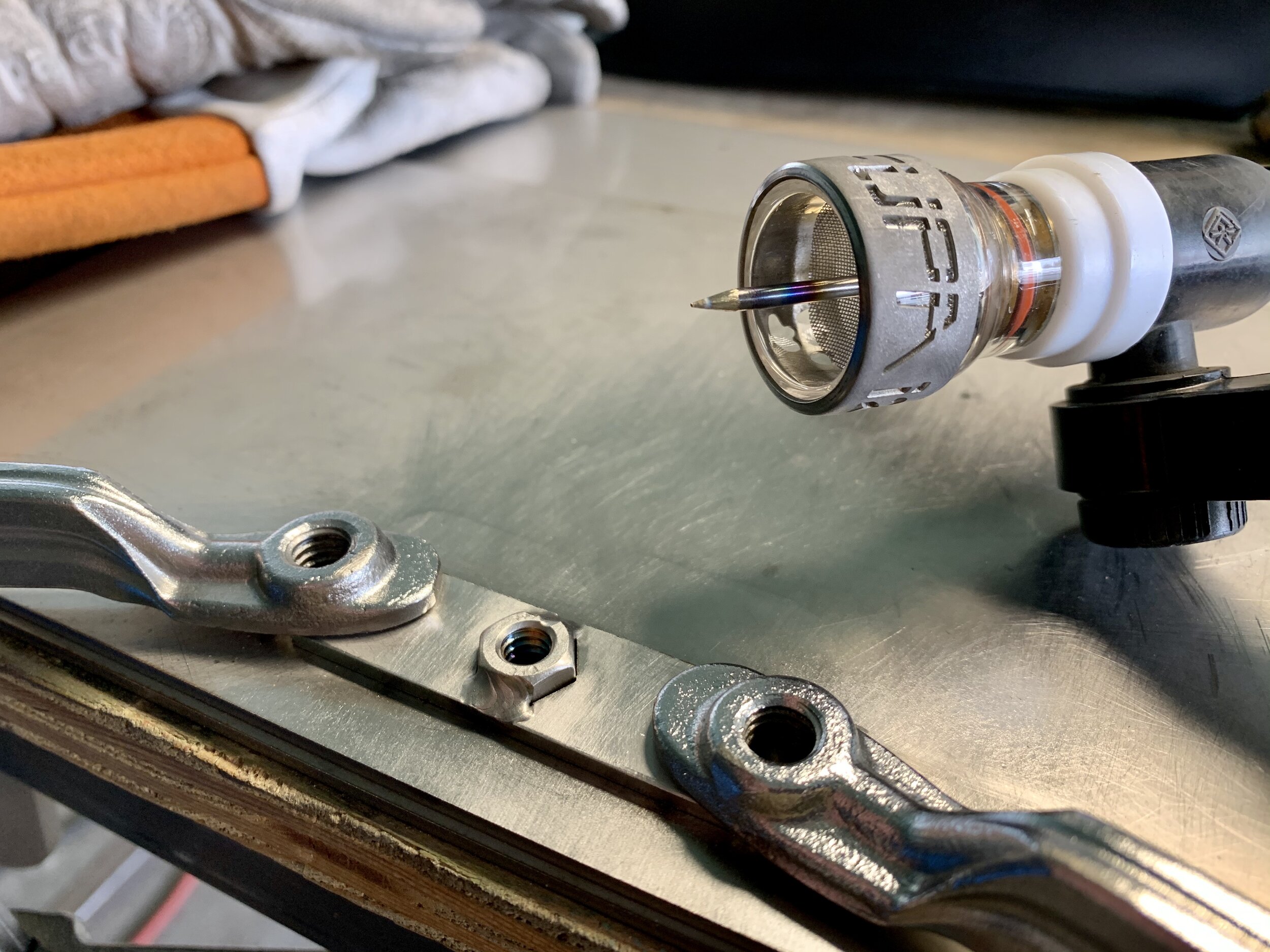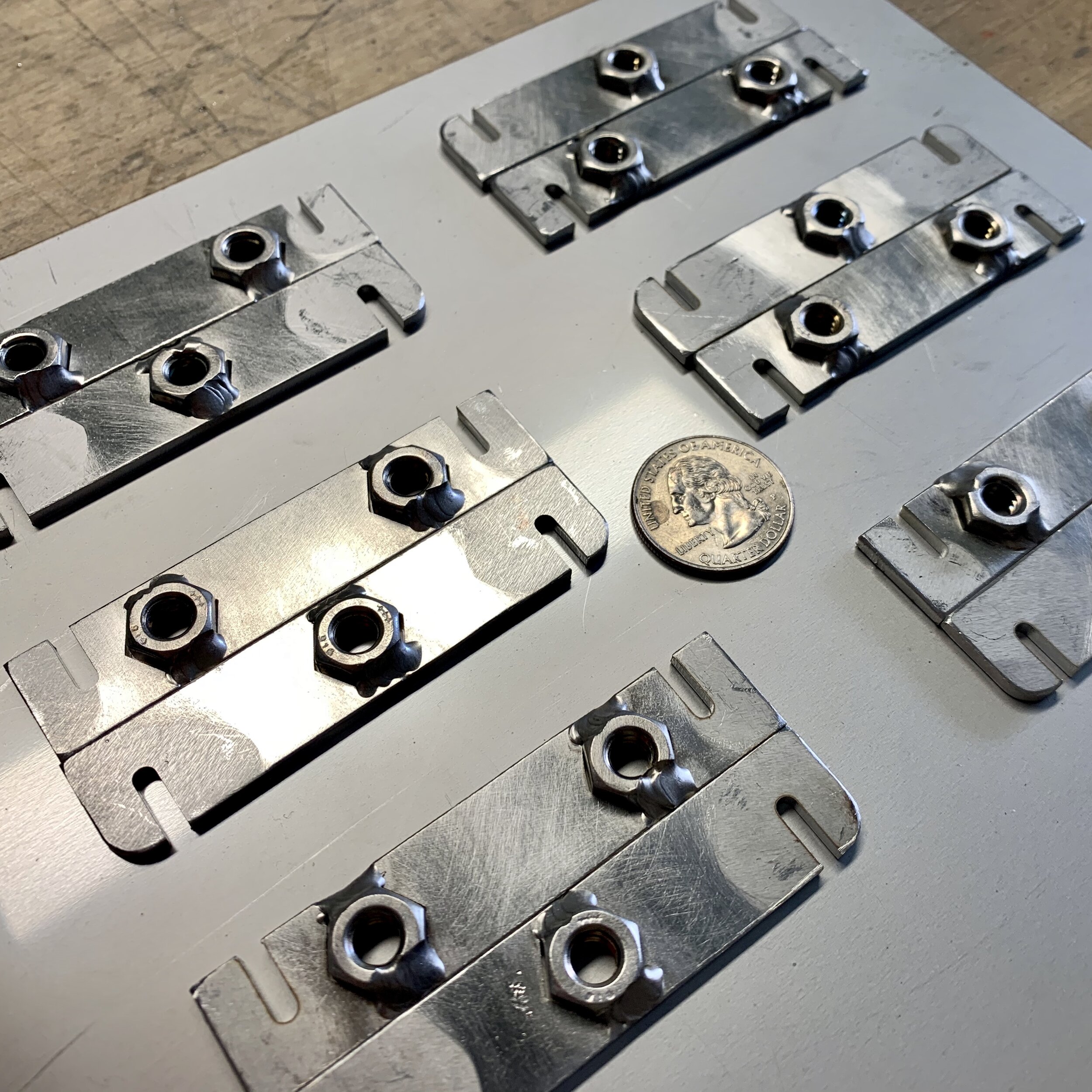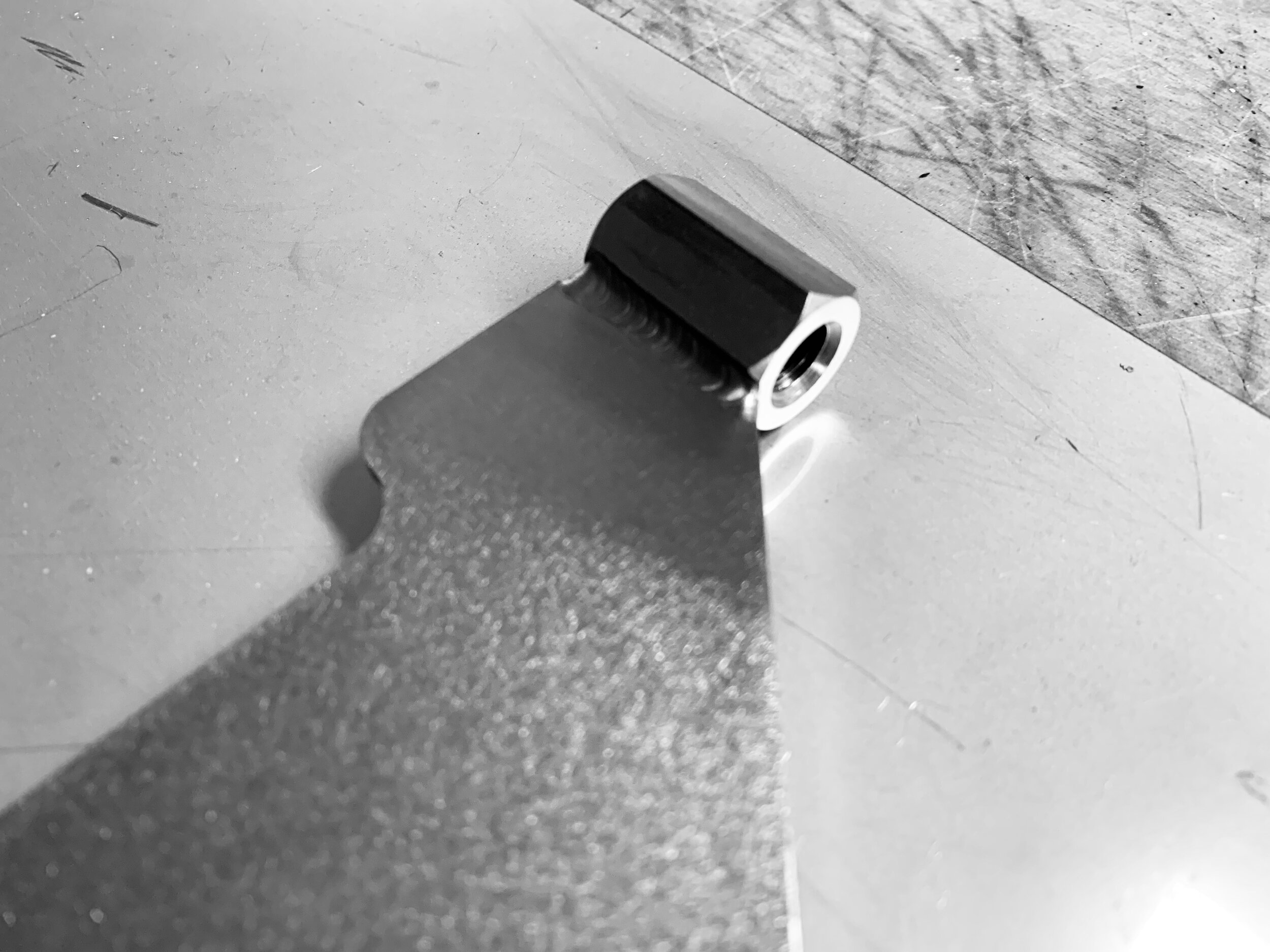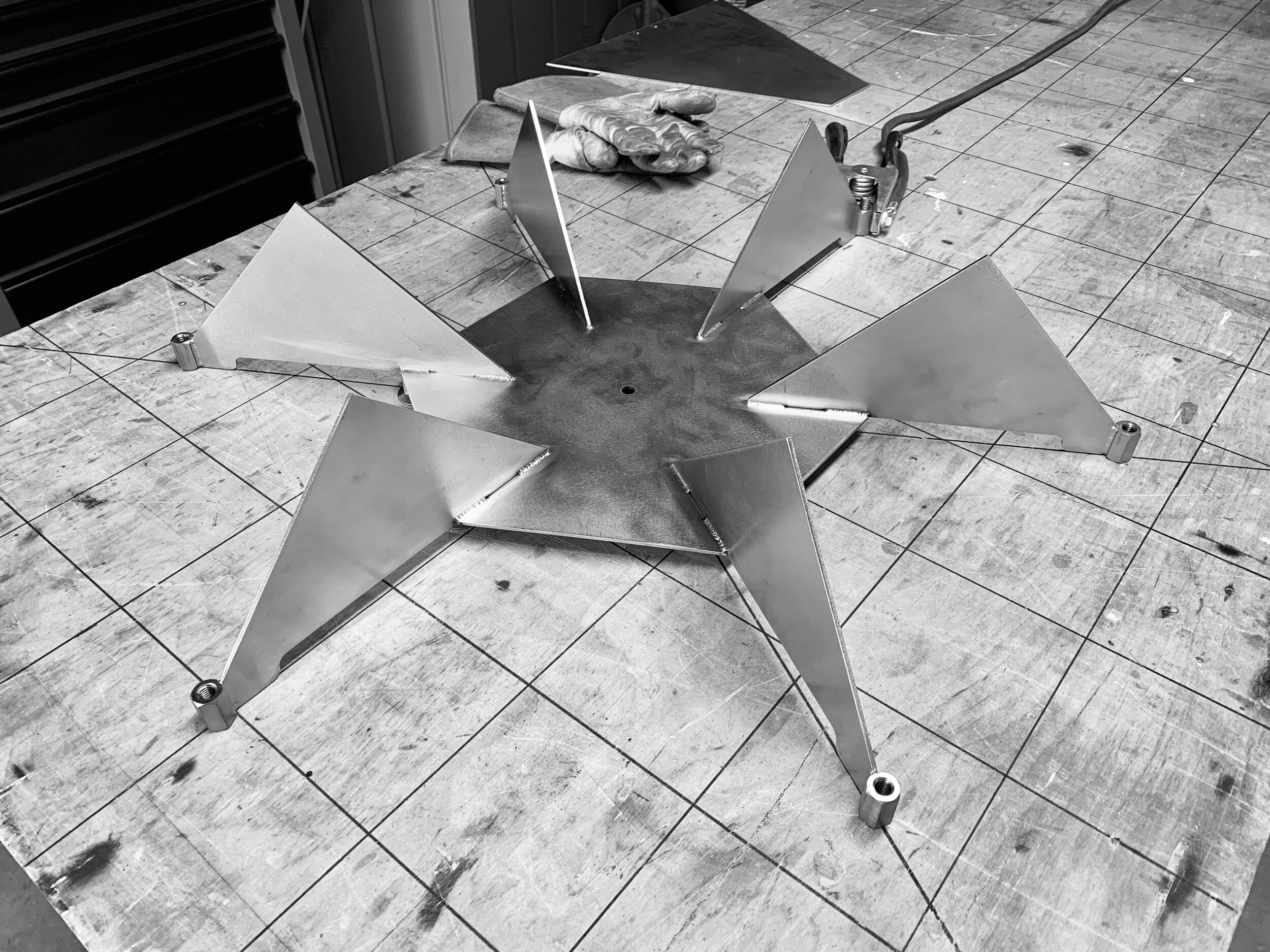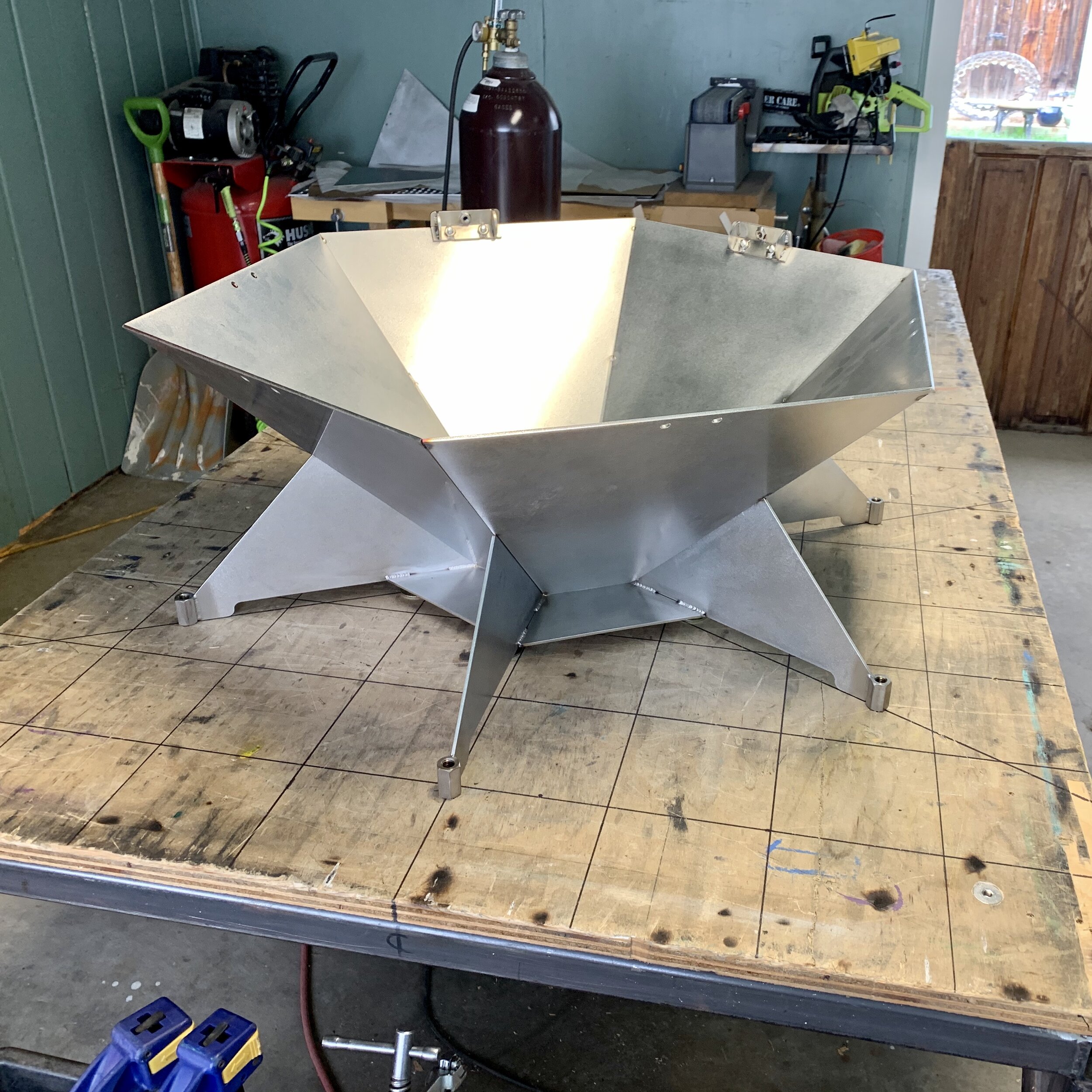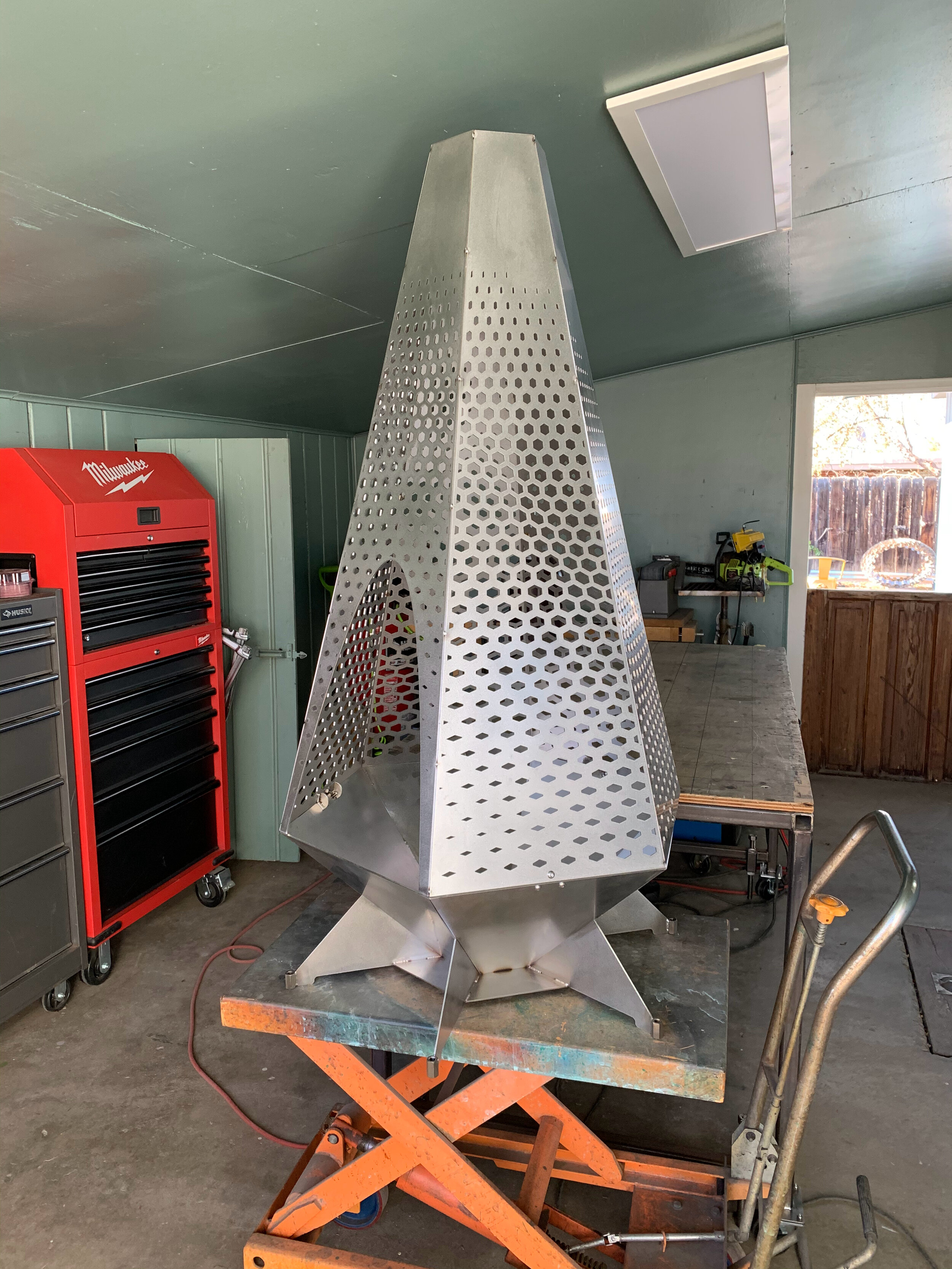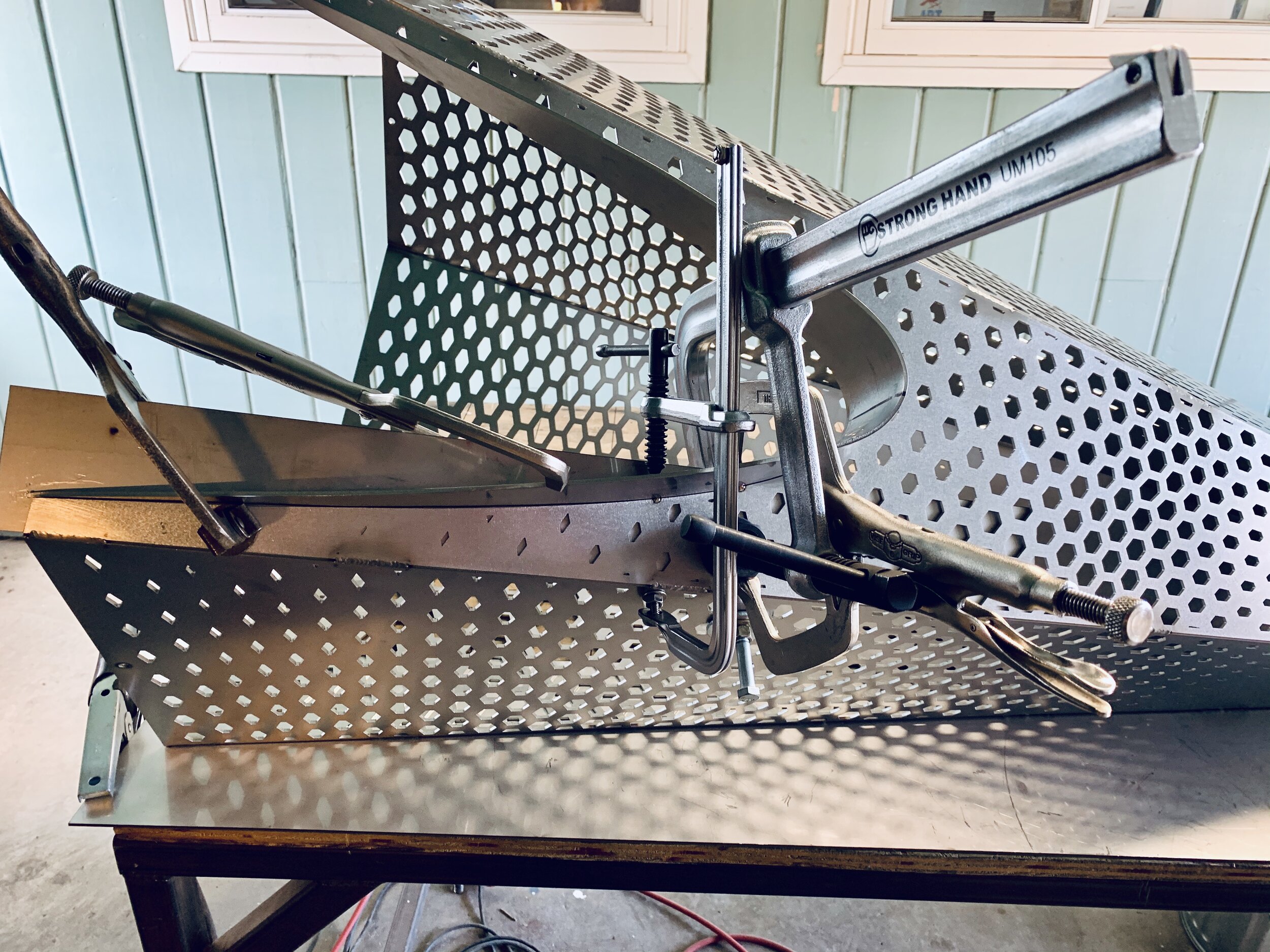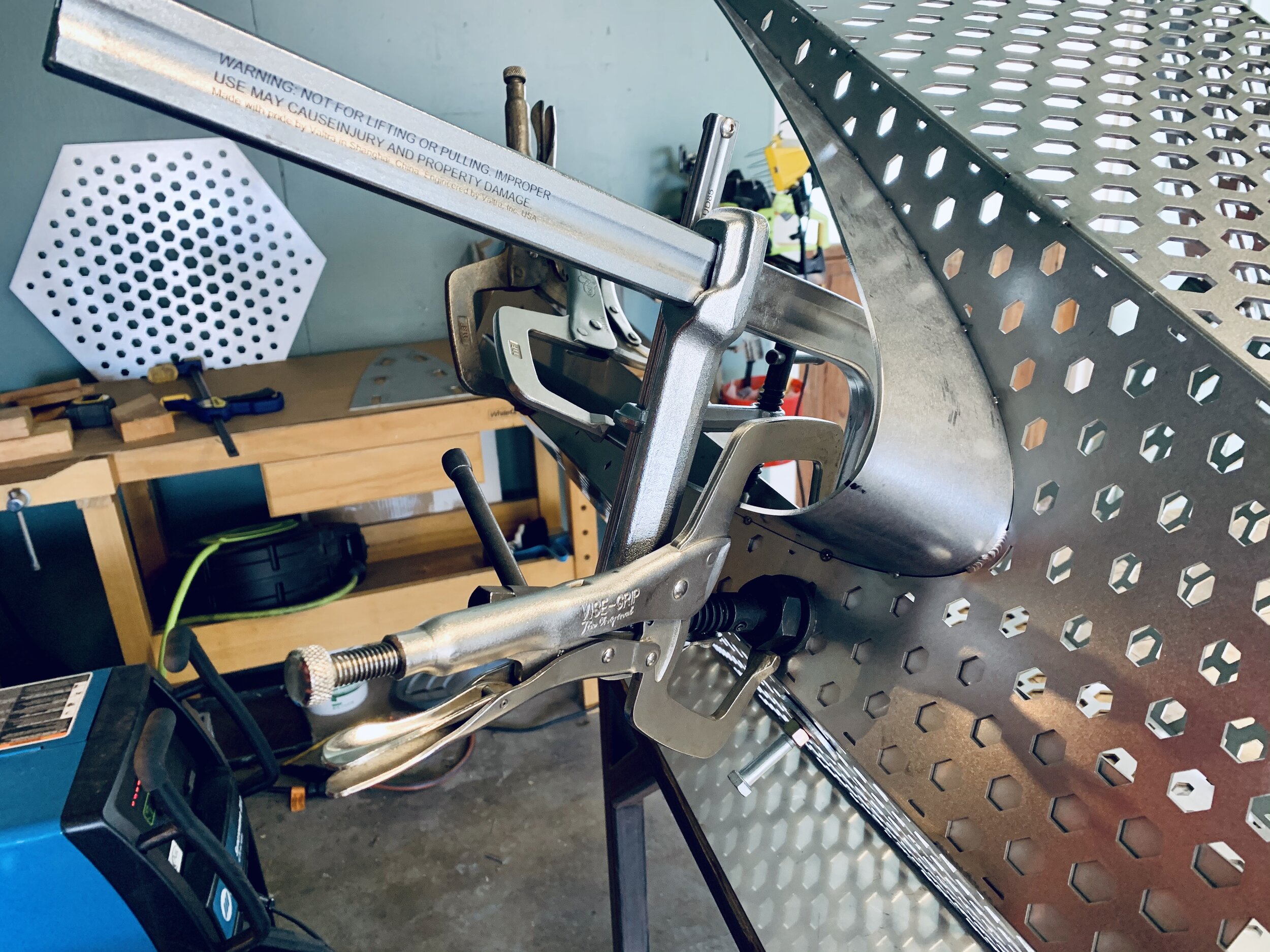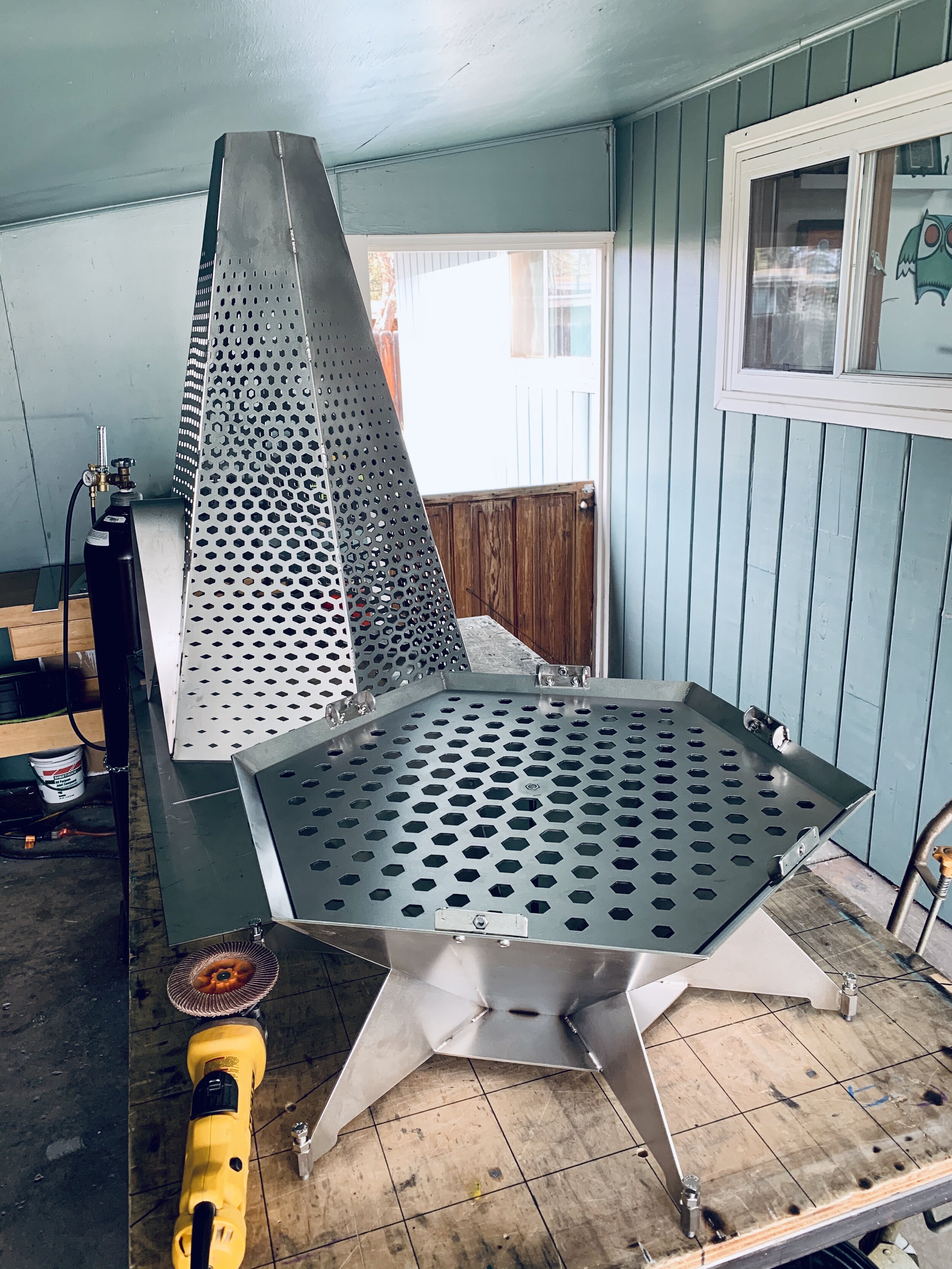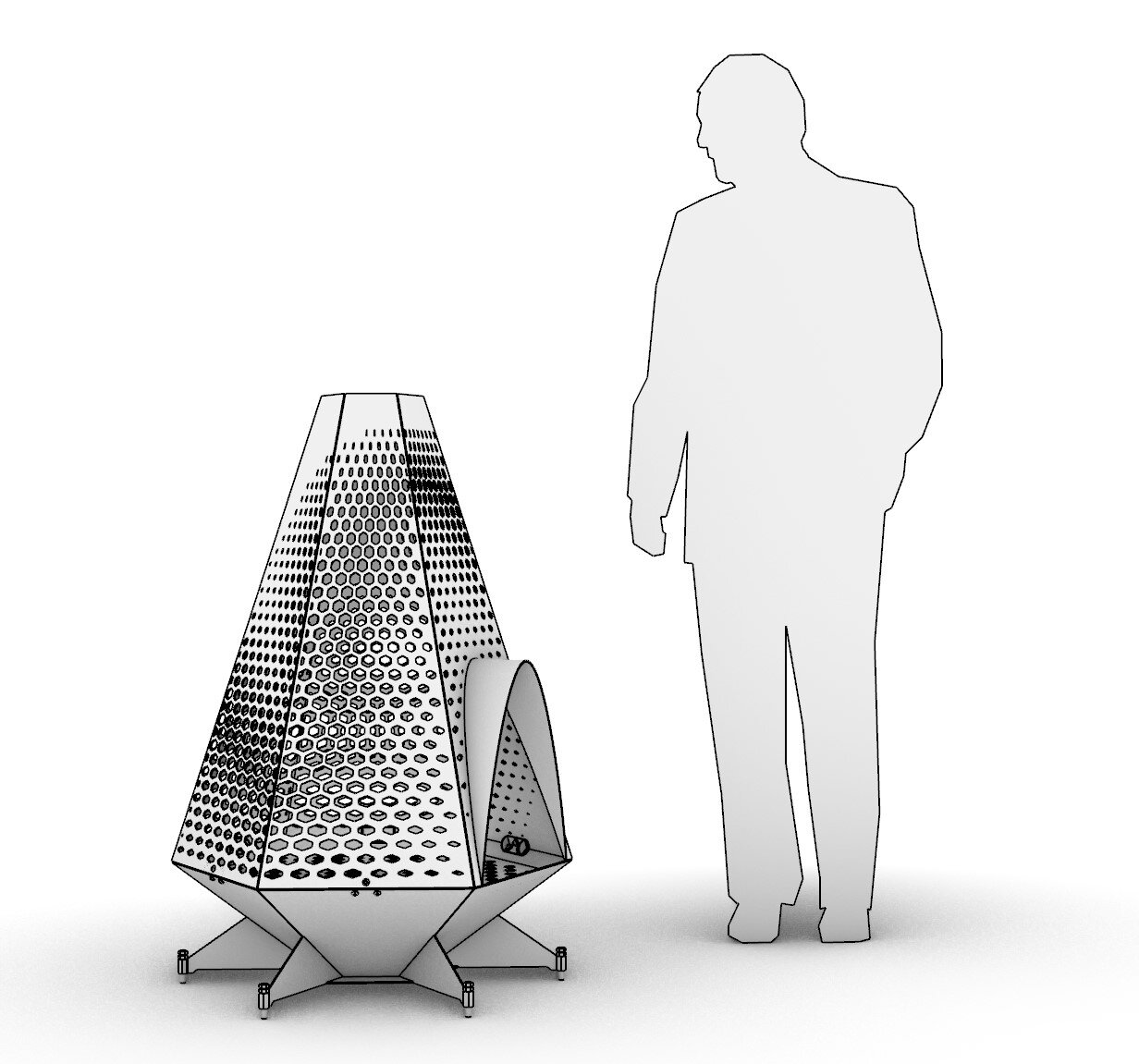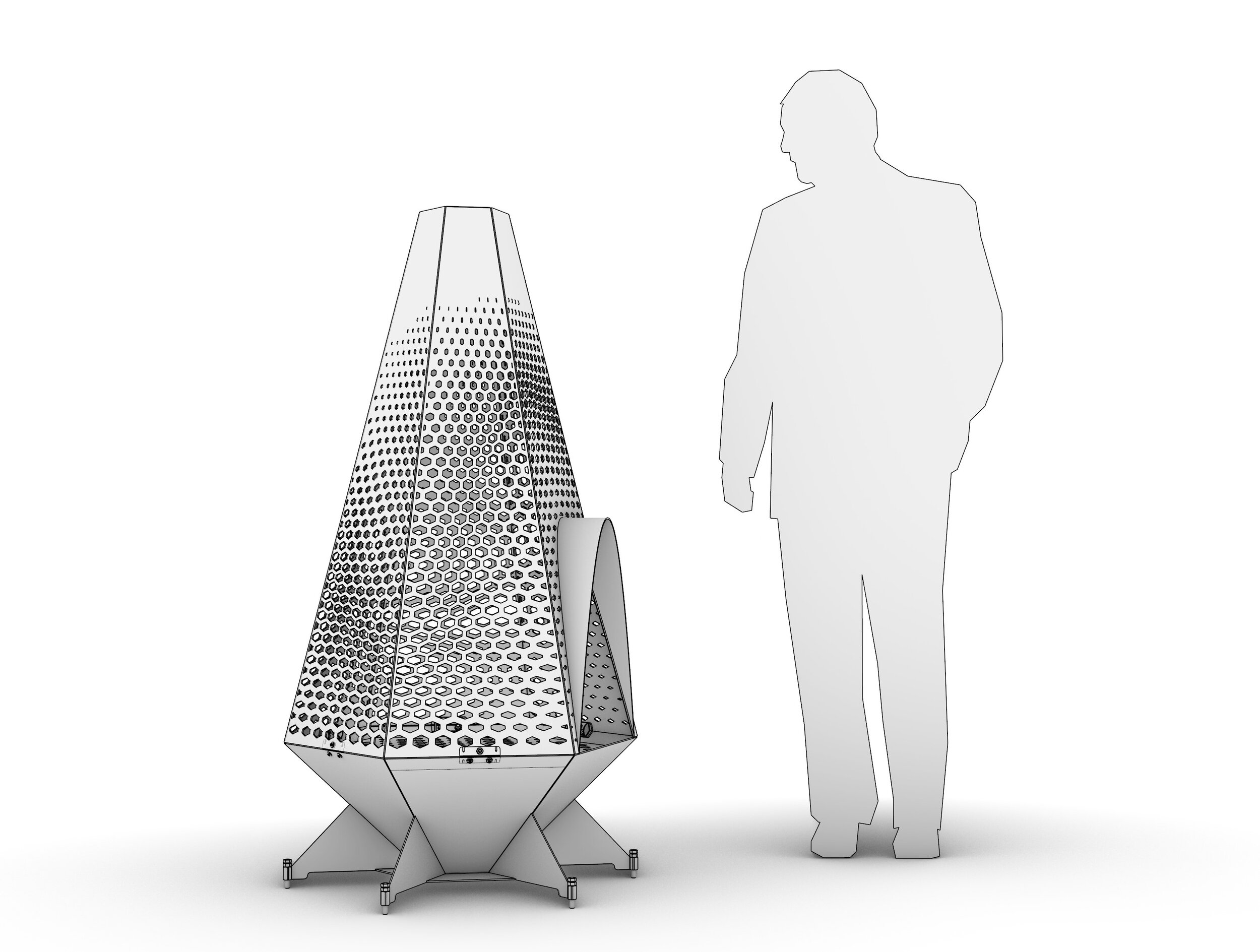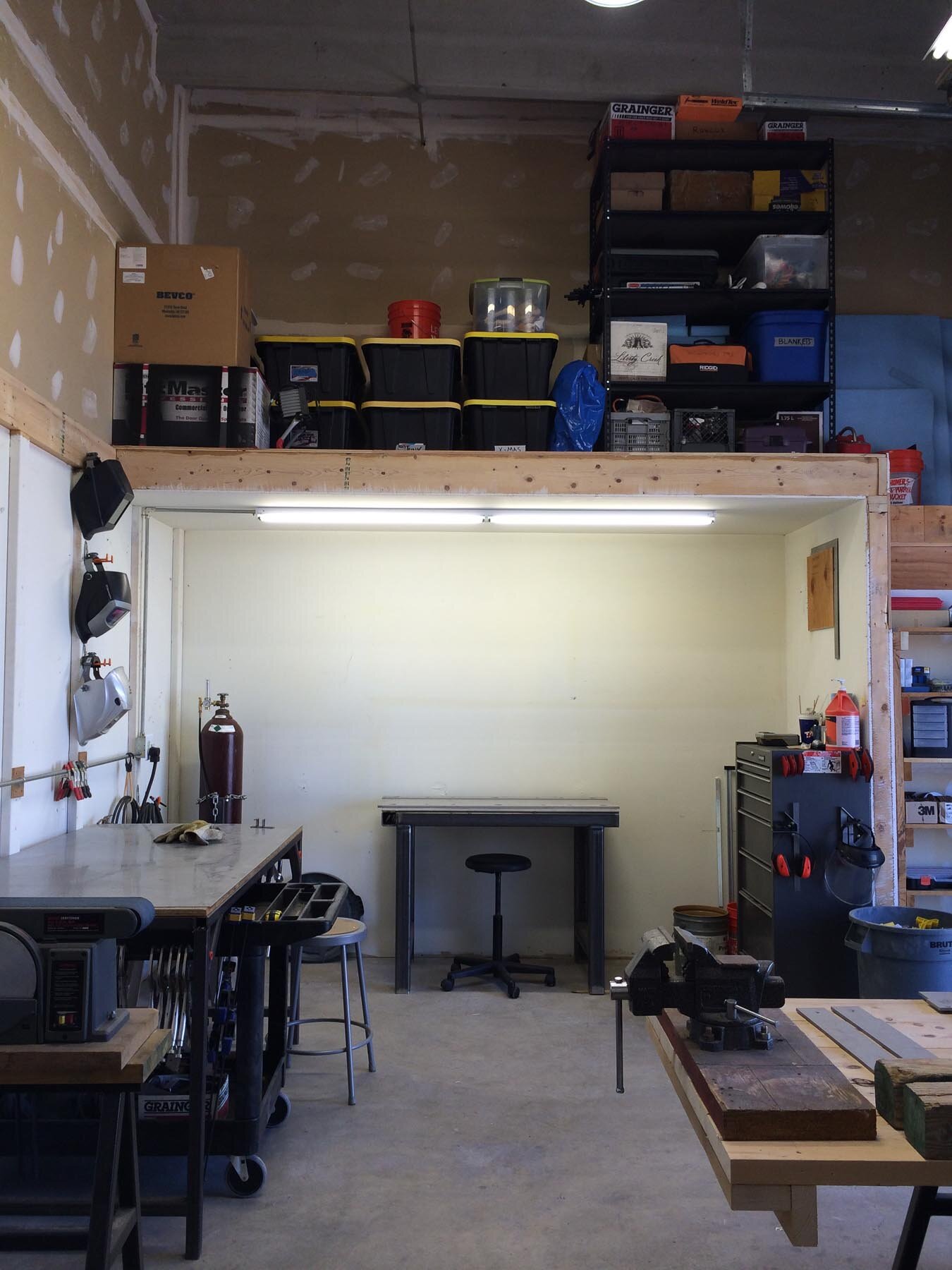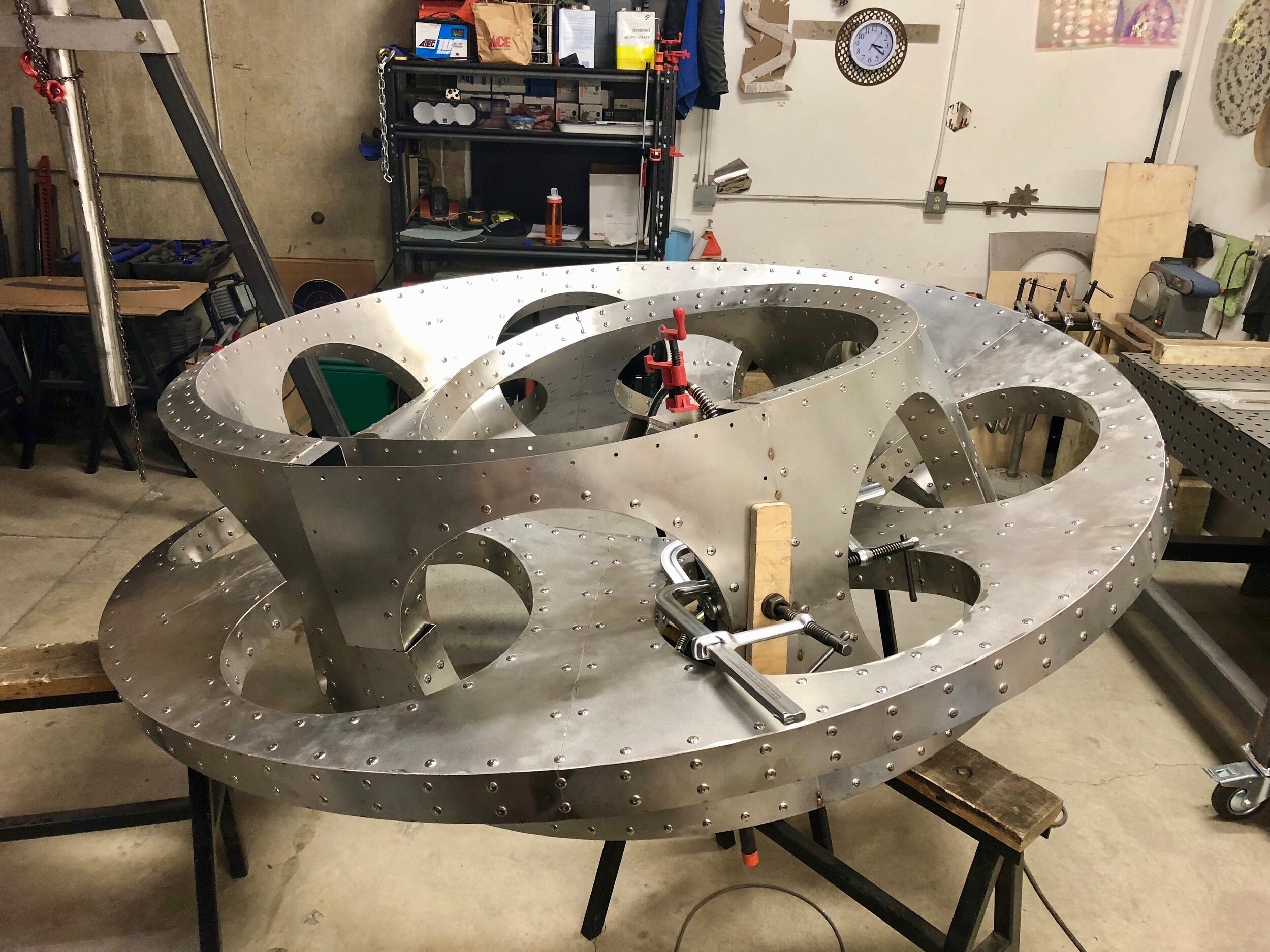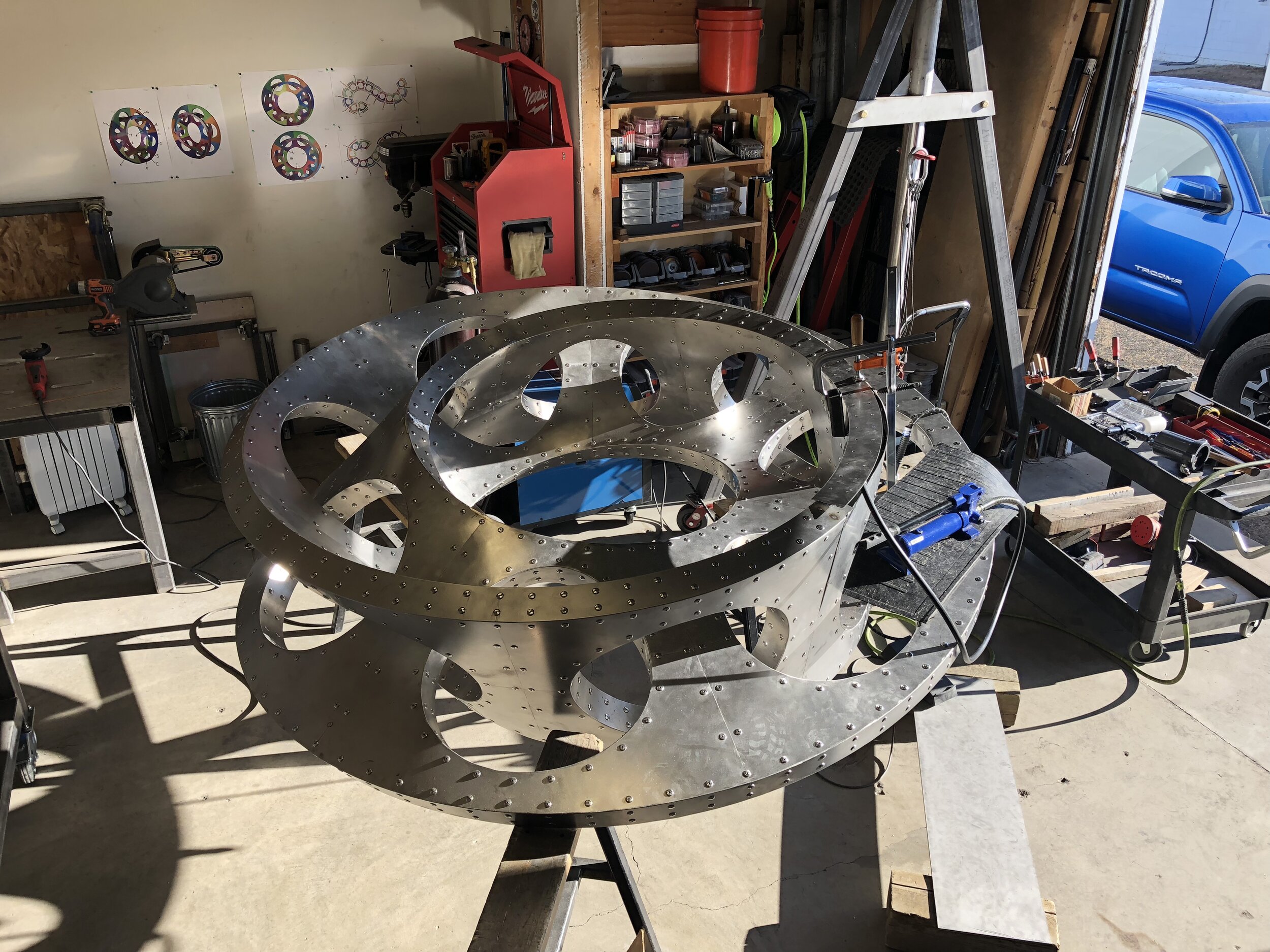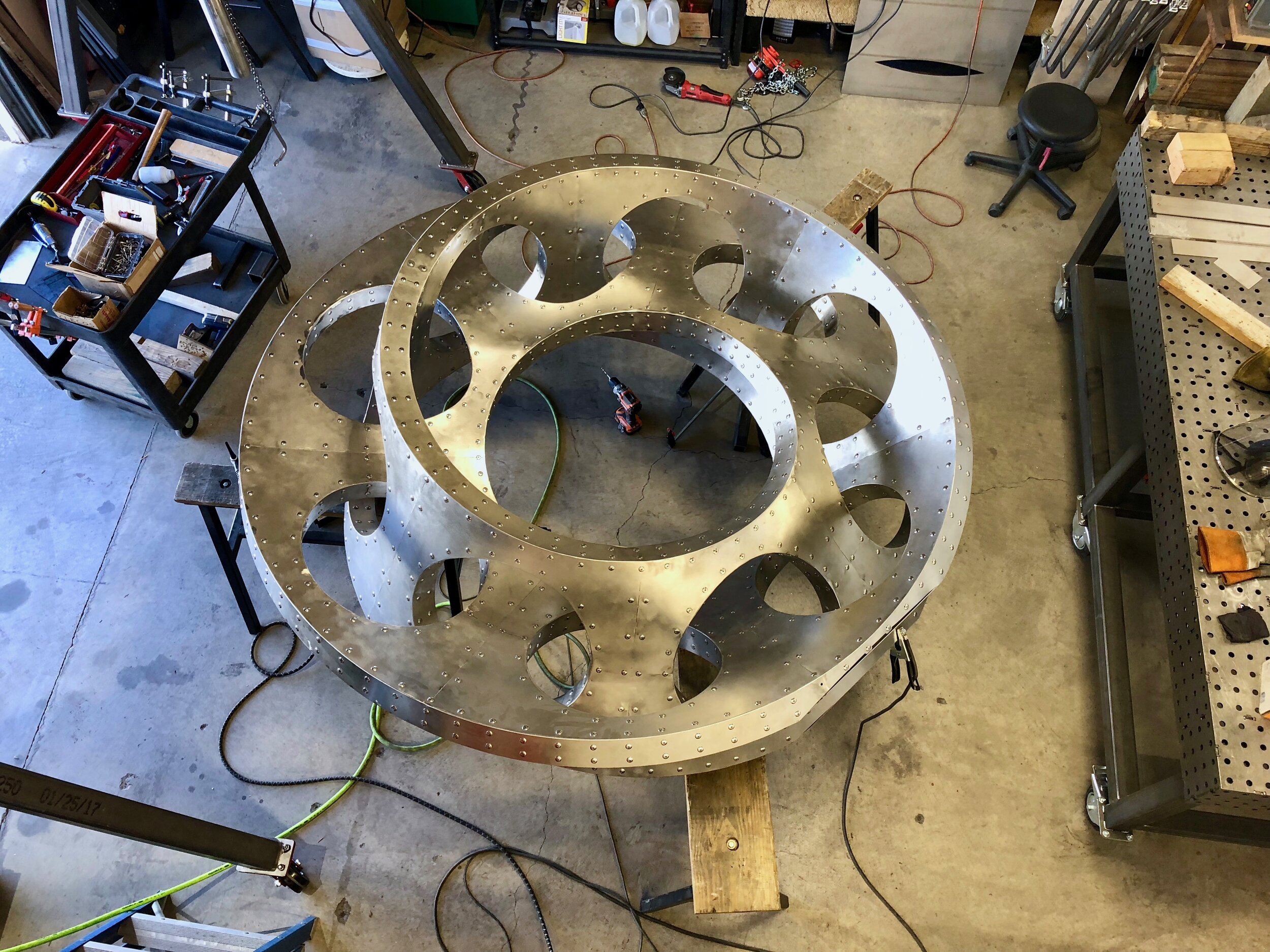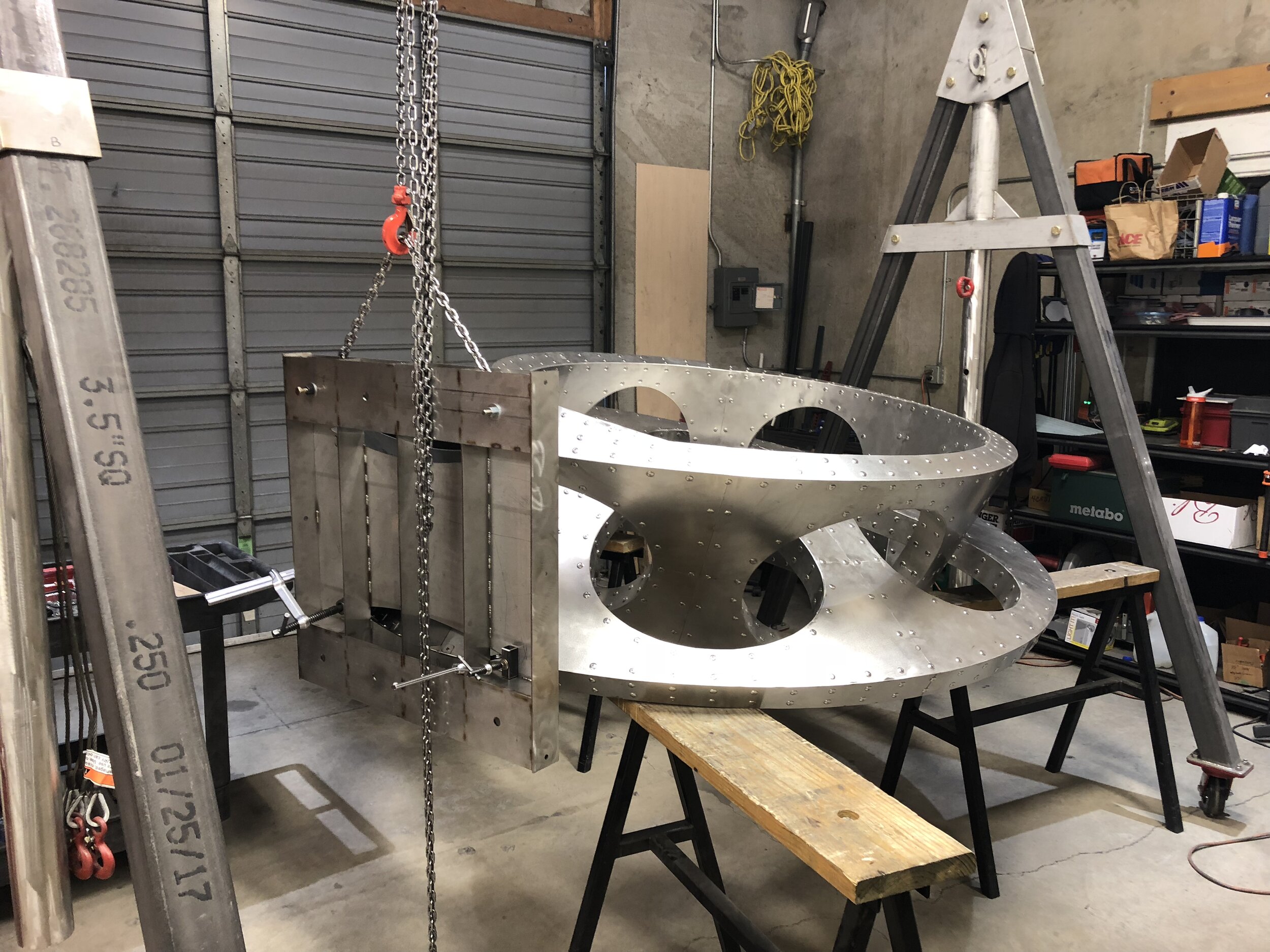With the welding and sanding and bolting all finished up, it’s time to test this thing out. My dear friends Bruce and Cyndi volunteered their beautiful property on the lake for a test site, and, once a day with cooperative weather materialized, it was time.
What an amazing evening! Couldn’t have been happier with how the CinderCone performed — and the visual effect of the cut-out pattern when combined with the dancing flames was nothing short of spectacular. We stoked the flames MUCH more than required to have a nice fire in order to stress-test the design. Glad we did, as it revealed some structural shortcomings that would need to be addressed before offering these up for sale.
Metal may seem like a solid, stable material — one that you can rely on to hold its shape and remain true to itself under stress. In reality, it is subject to all kinds of movement when subjected to heat. These thermal stresses need to be countered to maintain the integrity of the object.
The aftermath of our stress test showed that the outer “shell” of the design handled these forces well — but the grill itself, directly in contact with the source of heat, needed some shoring up. Any welder can tell you that one only need curtail expansion and contraction throughout the heating cycle to minimize warping. The grill was allowed too much freedom in this design, and the forces went to work on it. I needed to do some redesigning, but thought I’d try to retrofit the V1.0 CinderCone before tackling V2.0.
Adding ribs that radiate outward from the center of the grill to add stiffness. Notice the bonus colors provided by the fire!
The brackets not only attach the upper section to the fire basin, but they also serve to pin the edges of the grill in place. I fabricated longer brackets to spread this pinning action along the entire edge.
A phalanx of new brackets ready to be installed. You’ll notice that there are only five; the side with the door doesn’t get one, and that proves to be problematic.
After a second test fire, you can see just how much force gets applied to the grill, and why the design for the opening is not going to work.
So, although the overall design was a success, there are some structural details that need improving. Another sticking point was removal of the ash that accumulates beneath the grill. I’d thought that removing the top section and grill would be easy enough to access this area, but adding the longer brackets and their additional fasteners made that too big a hassle. This thing needs an ash clean-out door.
On to CinderCone Version 2!
